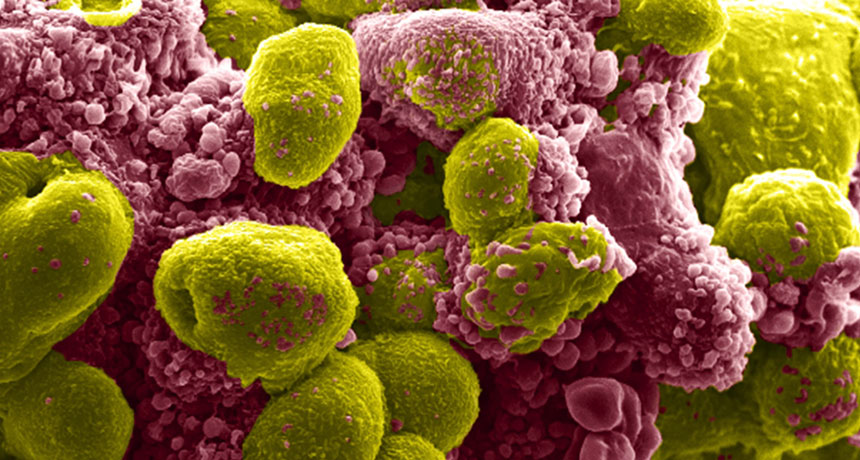Here’s how fast cell death can strike
Scientists have clocked the speed of a form of cellular suicide called apoptosis

DYING BY THE NUMBERS In this electron micrograph, prostate tumor cells dying from a type of programmed cell death called apoptosis are shown (purple) alongside healthy cancer cells (yellow). Scientists are learning more about how apoptosis spreads through cells.
Khuloud T. Al-Jamal and Izzat Suffian/Wellcome Collections (CC by 4.0)






